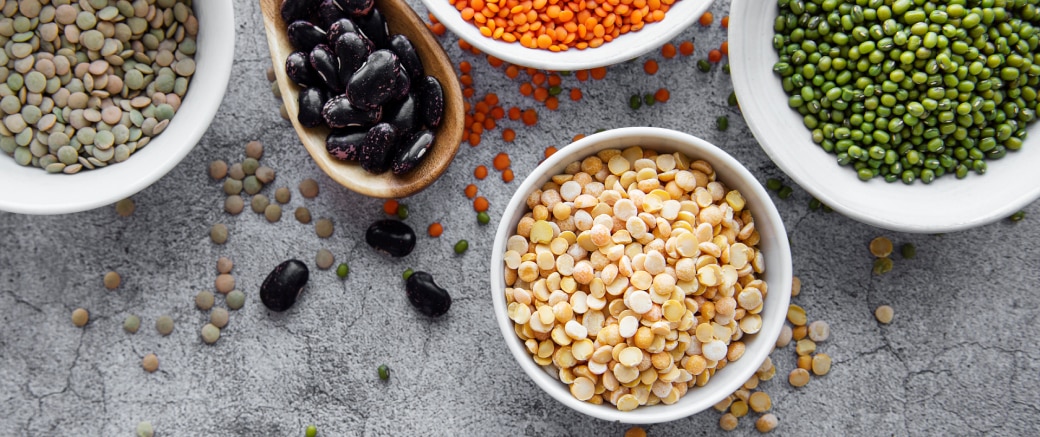Analyzing Plant-Based Meat: Development of Convincing Meat Texture

Shimadzu’s Solutions For Alternative Meat Development
Our eating habits have transformed remarkably in recent years in tandem with our growing awareness of the connection between our dietary choices and their impact on our bodies and the earth. With increasing importance placed on health and sustainability, meat alternatives are gaining traction as they may provide the same satisfying experience of meat consumption while reducing impact on our planet's future.
This shift has initiated a burgeoning rise in plant-based meat alternatives gracing the shelves of grocery stores with myriad options from veggie burgers to chicken nuggets, made of plant-based food ingredients like soy and peas to whole grains like brown rice. Today, plant-based meat plays a pivotal role in balancing our palate and sustainability.
In this page, we explore the components of plant-based meat and how we can support its better quality.
What is Plant-Based Meat?

Plant-based meats, also known as meat alternatives or meat substitutes, are food products made of plant-derived ingredients that imitate real meat. These plant-based products are consumed in place of animal-based meat, oftentimes due to health, environmental and other ethical considerations. Plant-based meats seek to offer a sustainable and cruelty-free solution without compromising the classic taste and texture of conventional meats.
How Are Plant-Based Meat Alternatives Made?

As the name suggests, plant-based meats originate from plant-based sources and are reformulated to look, feel, taste and smell like regular meat. Legumes and sources of soy protein like tofu and tempeh, as well as wheat gluten, potato starch, beans, peas, and various grains are common ingredients of “imitation meat”. These vegetarian and vegan-friendly elements are skillfully combined and customized to suit the requirements of diverse meat alternative manufacturers, resulting in a range of meat products with distinct flavor profiles and mouthfeel.
Learn More About Our Analysis to Create Convincing Meat-Alternatives
Analysis of Plant-Based Meats
- Flavor Analysis
Raw meat on its own has little aroma; therefore, almost all aromas associated with “meatiness” are created during the cooking process by the Maillard Reaction between amino acids and reducing sugars. That reaction determines which non-volatile precursors release volatile aroma compounds. Plant-based meat (PBM), products created to resemble animal meat in both look and taste, are growing in popularity. A plant protein such as soy protein concentrate, along with colors, stabilizers, and oils, is used to successfully mimic meat flavor and texture. In addition, just like in animal meat, the amino acids of that protein undergo the Maillard Reaction.
- Taste Analysis
There are five basic tastes, including deliciousness, which are perceived by people. The amount and kind of amino acids contribute to taste components. Of all the amino acids, glutamic acid is widely known as a component of the delicious taste. Furthermore, the types and component ratios of amino acids largely control the flavor of food products. For example, glycine and alanine are associated with sweetness, valine and leucine with bitterness, and aspartic acid and glutamic acid with deliciousness.
- Texture Analysis
The texture of food, including the sense of crispness, springiness, firmness, and the feeling on the tongue, is an important element that together with taste has an impact on the deliciousness of food. Food texture is normally evaluated using sensory tests. However, sensory tests are often difficult to reproduce, due to individual differences in people’s sensations and physical condition. Shimadzu’s texture analyzer supplements sensory tests by obtaining objective results in the form of numerical values for use in the field of food development.
The Significance of Texture Analysis

With a growing interest in sustainable and healthy diets, plant-based meat is getting more attention than ever. As demand increases for developing new products, there is a corresponding focus on their flavor quality.
But it's not just the taste and aroma that can define the quality of foods. Texture assessment is an essential parameter for evaluating food quality, especially when discussing meat substitutes. Material testers with appropriate jigs can clarify the properties related to the texture, such as the hardness.
Shimadzu’s solutions offer robust and reliable solutions to conduct in-depth texture analyses that enhance the overall quality of plant-based meat, which can create an impact in the meat alternative market.
Continue reading for more information or download a copy of our brochure.
Material Testing Analysis for Texture
Material testing instruments can assess the texture of food samples without any partiality.
Sample Preparation
- Four different commercially available plant-based meat products.
- They are all substitutes for ground beef and were cooked before analysis.
- 25 g of the samples were compressed to the same shape mold. The mold is truncated-cone-shaped with an upper and lower diameter of 2.5 cm and 4 cm, respectively.
- The molded samples were then put into a 200°C oven for 20 min. The samples were tested when the internal temperature was around 65°C.
Material Tester Analysis
- Instrument: EZ Test
- Software: TRAPEZIUMX Texture
The force profile when a jig starts pressing the sample is recorded. A cylinder-shaped jig whose diameter is 10 mm was moving down with constant velocity until it completely penetrated the sample. Force profiles are basically similar to each other, though there are slight differences in their shape.
This difference should be reflected in each sample's property of texture. The test force indicates hardness. The larger the test force, the higher the hardness. A longer time to max force or a longer stroke to max force indicates more cohesiveness.
The Science of Crafting Convincing Meat Texture With Shimadzu’s Solutions
Taste, aroma, and texture are important independent factors and should be discussed separately. However, we sometimes want to rate the "total quality" of the food products. Shimadzu can provide a fuller compliment to your food testing with our LC-MS and GC-MS, opening the possibility to assess the total quality of plant-based meat products.
Additionally, learn more with us at our Resource Library.



